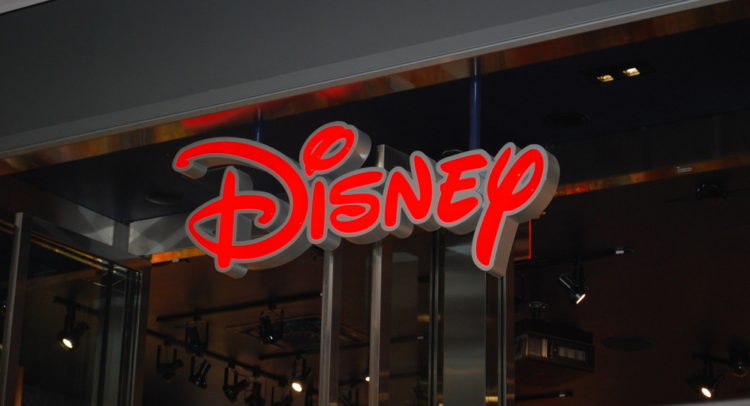Despite the closure of theatres, parks, and restrictions on many other leisure activities, The Walt Disney Company (DIS) has appreciated 75% in the last 12 months. The success of Disney+, its subscription-based content streaming platform launched in late-2019, had a lot to do with the appreciation of Disney stock in 2020 and so far this year.
In a press release from March 9, the company announced that Disney+ has surpassed 100 million worldwide subscribers, which is a feat that took Netflix, Inc. (NFLX) more than 10 years to achieve. There is certainly momentum for Disney+, and investors are likely to assign high valuation multiples for Disney because of this. That being said, there’s reason to believe the Parks & Resorts business segment will be the main revenue driver in the foreseeable future, pushing Disney stock to new highs.
Economic Reopening Is A Catalyst
In the last five years, the Parks & Resorts segment has been the top contributor to revenue. According to data from company filings, revenue from this segment has made up over 30% of total revenue in almost every quarter since the beginning of 2016 through the second quarter of 2020.
That said, mobility restrictions imposed by governments around the world to curb the spread of COVID-19 in early 2020 led to a significant decline in revenue from this segment, which was partially offset by the strong revenue growth reported from the Consumer Products & Interactive Media segment, including Disney+.
Disney+ average revenue per user was $4.03 in fiscal Q1 2021, which implies the company is bringing in just over $400 million in subscription revenue from the streaming platform. To put things into perspective, Netflix, the global leader in the over-the-top video streaming industry, had 204 million subscribers at the end of 2020. In a hypothetical scenario where Disney+ reaches this number within the next year or so, the company would be generating around $818 million in revenue, assuming no change in the average revenue per user. This, arguably, is an extremely bullish scenario, and Disney+ is highly unlikely to reach the same number of subscribers as Netflix in the next few years.
The Parks & Resorts segment, in comparison, generated more than $7 billion in revenue in fiscal Q1 2020 alone, before the pandemic’s onset. This highlights the importance of the segment in terms of profitability, and the fact that Disney+ revenue is still a drop in the bucket in comparison to the Parks segment if a full recovery can be expected in the foreseeable future.
Disneyland in California is set to reopen in late April at limited capacity, but this is a promising start. To celebrate the 20th anniversary of California Adventure, Disneyland announced a special event scheduled for March 18 with limited capacity, and a ticket for this event was priced at $75. In less than a day after announcing this event, tickets were sold out, demonstrating the strong pent-up demand for leisure activities in the country. When theme parks reopen, Disney is likely to see strong demand for its parks and resorts, which will be a catalyst that drives the share price higher.
Wall Street’s Take
Turning to Wall Street, the average analyst price target is $206.59 for Disney shares, which implies upside potential of just 6% from the current market price. The expected recovery of the Parks & Resorts segment, however, is likely to push the stock much higher in the second half of this year as a notable improvement in investor sentiment is in the cards. Additionally, based on 19 Buys and 5 Holds, DIS scores a Strong Buy consensus rating. (See Disney stock analysis on TipRanks)

Takeaway
Many investors continue to focus on Disney+ as the future of the company, but the Parks & Resorts segment has been the real driver of earnings in the last five years. The expected reopening of entertainment facilities in major regions of the world and the pent-up demand for travel and leisure will help this business segment thrive in the coming years, leading to stellar financial results.
Disney, historically, has traded like a value stock and an expansion in valuation multiples did not materialize in the last five years. The focus on Disney+ and the ongoing comparison to Netflix, which is trading at very high earnings multiples, is a good sign as the company will now be valued more like a growth stock in the market, which paints a promising picture considering the expected growth in earnings.
Disclosure: The author was long Disney shares at the time of publication.
Disclaimer: The information contained herein is for informational purposes only. Nothing in this article should be taken as a solicitation to purchase or sell securities.









